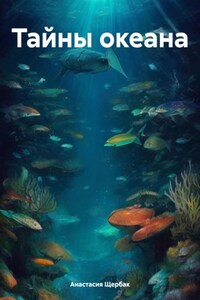QUANTUM EVOLUTION
Life in the Multiverse
JOHNJOE McFADDEN
William Collins
An imprint of HarperCollinsPublishers 1 London Bridge Street London SE1 9GF
www.harpercollins.co.uk
Published by HarperCollinsPublishers 2000
Copyright © Johnjoe McFadden 2000
Johnjoe McFadden asserts the moral right to be identified as the author of this work
A catalogue record for this book is available from the British Library
All rights reserved under International and Pan-American Copyright Conventions. By payment of the required fees, you have been granted the nonexclusive, nontransferable right to access and read the text of this e-book on-screen. No part of this text may be reproduced, transmitted, downloaded, decompiled, reverse engineered, or stored in or introduced into any information storage and retrieval system, in any form or by any means, whether electronic or mechanical, now known or hereinafter invented, without the express written permission of HarperCollins e-books.
HarperCollinsPublishers has made every reasonable effort to ensure that any picture content and written content in this ebook has been included or removed in accordance with the contractual and technological constraints in operation at the time of publication.
Source ISBN: 9780006551287
Ebook Edition © FEBRUARY 2016 ISBN: 9780007481972 Version: 2016-02-29
‘A highly enjoyable read with clear explanations of molecular biology and quantum physics – and then speculations in search of a borderland between them. It is not a question of whether quantum mechanics is needed to understand biochemical processes, but exactly where, and at what level. For sure we need quantum ideas to understand in detail how enzymes work. Maybe we need them too for those two great puzzles of evolution: the origin of life and the physical roots of conscious experience.’
GRAHAM CAIRNS-SMITH, author of Seven Clues to the Origin of Life
‘If you want a short course in the greatest scientific insights of the last two centuries – evolution in the nineteenth and quantum mechanics in the twentieth – Quantum Evolution is the ideal primer. Its purpose, though, isn’t to rescue the scientifically undereducated, it’s far, far more ambitious … Patient, clear and logical, a masterful job … [and] a hard, wild and amazing trip.’ DAVID BROWN, Washington Post
To the memory of
Roly, Tom and Alice
Starlight glistens on a spaceship’s silvery hull as it cruises, unseen and unmanned, amongst the planets of a distant solar system. Guided by the encoded instructions of an alien civilization it glides past dark, rocky planetary outposts and bloated gas giants until it reaches its goal, and swings into the orbit of an inner planet. A probe is released. Retrorockets fire that adjust the probe’s trajectory, easing it slightly from the mother-ship’s geostationary orbit and turning its heat-resistant nose towards the ground. The grip of the planet’s gravity drags the probe inwards, through ever-decreasing orbits. Faster and faster it spins until, plunging through clouds, it finally emerges under a leaden sky. A parachute is released to halt the headlong dive, and the craft slowly descends to land on a rock-strewn landscape.
Minutes later, a metallic lid is drawn back, exposing a camera lens, and pictures are beamed back to the mother-ship. The camera pans across the rocky scene. The same rubble-strewn landscape is everywhere – rocks of all shapes and sizes lie sunken into fine grey sand. The air is still. Nothing moves. The camera scans the monotonous surface stretching in all directions towards the horizon – grey rocks, some precariously balanced atop others, others lie shattered, blasted by the forces of alien weather. The camera pans again, and then one rock, in shape and colour much like any other, spreads its wings and soars into the sky. The mother-ship sends a signal backward through the vastness of space, towards the distant home of the spaceship’s makers: LIFE!
The planet is, of course, Earth and the rock a bird, perhaps a rock pigeon, lost in barren desert. The story illustrates the wonder we should feel at the most remarkable phenomenon in the known universe – life. Our telescopes and space-probes return images of the universe’s many marvels – the twisted braids of Saturn’s rings, Neptune’s moon Mirander’s scarred and shattered surface, the birth of stars within the Crab Nebulae. Extraordinary as these are, they pale before the astonishing nature of life itself. And yet, all life forms are essentially rocks – made of the same materials, obeying the same laws, as the rocks, stone and sand that surround us. We are rocks that run and swim, climb and leap; that hear, touch and see; rocks that can look out into the vastness and grasp for an understanding of ourselves and the universe that made us.














